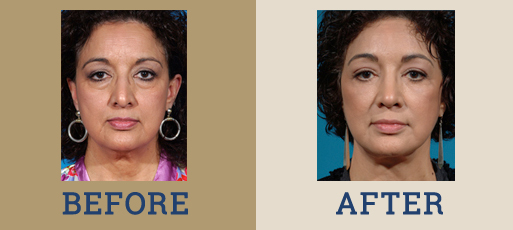Definition and Anatomy
Rhinoplasty, or surgery to re-shape the nose, is one of the most commonly performed plastic surgery procedures. It doesn’t take long for one to recognize that noses come in all shapes and forms. There are ethnic differences as well. As with any cosmetic procedures, the surgical goal should be for realistic improvements that are balanced, given the limitations of a patient’s anatomy.
The nose has very unique and specialized anatomy. For sake of clarity, there are two main divisions or parts – the internal and external nose. The external nose is the visible portion and is composed of the overlying skin and fat as well as the underlying structural framework. The root of the nose (the top) is supported by bone while the tip of the nose contains cartilage. The bone is rigid, while the tip is more flexible and “spongy.” The transition is generally located in the middle of the nose. The internal nose consists of the nasal passages and the central “septum” which divides the two.
Surgical Approaches to the Nose
Surgery of the nose can be classified as either functional or cosmetic. Generally, surgery to improve nasal function involves correcting any nasal airway obstruction, either from a deviated septum, excessive size of the internal bones (turbinates), or collapsed nasal passages. Cosmetic improvements are often performed to reshape or refine the tip, straighten the dorsum (the length of the nose), to augment the dorsum (increase the bridge), to reduce or remove a hump, or to narrow the width of the nose. Specific treatment plans depend greatly upon the existing anatomy, patient desires, and surgical ability.
Rhinoplasty can be performed either through an “Open” or “Closed” approach. This refers to whether an external incision is used or not. The open approach involves an incision through the columella (the column of tissue dividing the nostrils). This incision heals well and is usually imperceptible. The closed approach involves internal nostril incisions only. The open approach offers the benefit of improved visibility of the anatomy, and thus, easier correction of asymmetries and more accurate tip refinements.
Recovery
A typical rhinoplasty will take approximately 3 hours. An overnight stay is recommended for more extensive procedures for improved comfort and early swelling control. Post-operatively, swelling of the nose and bruising around the eyes may occur, but will gradually decrease over several weeks following surgery. Splints are often placed external to and internal to the nose. These, along with sutures, are typically removed one week after surgery. Cold compresses are encouraged for 24 to 48 hours after surgery to help minimize swelling and discomfort. Activities that may cause injury to the nose are avoided for 6 weeks post-op. Though most swelling resolves after about 8 weeks, there is residual swelling (primarily at the tip) that takes up to a full year to completely subside – this is when the final result of the nasal reshaping can be seen and assessed. Smokers must cease all nicotine use 4 weeks prior to and after surgery to prevent devastating wound healing complications including necrosis.
What to expect
Dr. Ha utilizes the most advanced techniques for nasal reshaping. He prefers the use of autogenous materials (patient’s own cartilage and tissue) for the longest lasting and safest results. He will provide a comprehensive consultation with a follow-up to review the proposed plan based upon this initial visit. This ensures optimally matching a patient’s desires with the planned surgical goals.
As a frequent contributor to the surgical text, “Dallas Rhinoplasty – Nasal Surgery by the Masters,” and as a faculty member for the Dallas Rhinoplasty Symposium, he provides tremendous expertise in nasal reshaping surgery.


